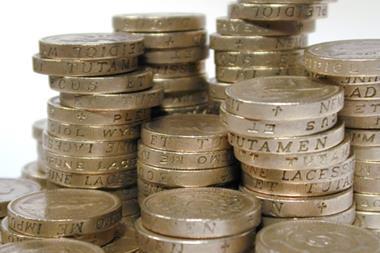An army wouldn’t dream of going into a fight without a plan of action, and yet many independents are already on the battlefield that is the convenience sector without an inkling of where they are headed, or why.
“Many people put a business plan together to get a bank loan, but then they put it away in a drawer and don’t look at it,” says Dean Holborn, who owns two stores in Redhill, Surrey. “If they took it out and analysed it six months down the line, they’d find it very useful.”
“You’ve got to have a plan,” concurs Jim Leese of Londis in Chorlton Down, Dorset. “I use a train station analogy - you need to know where you’re going, the right track, and what station you’re going to. And if things aren’t going where you expect, you need actions in place to get back on track.”
Trevor Higgs, who runs the Essentials university store in Canterbury, Kent, agrees that a business plan is essential in order to map out the future of a business. “Our directors have a five-year plan, and I have a three-year plan, which I review quarterly,” says Trevor. “The most important part of the plan is the financial side - how changes in the environment are going to affect us. We’re having a great year this year - we’re 16% up, but next year may not be the same, so we need to be cautious about how we plan.”
Meanwhile, Dean has a business plan for the year ahead and reviews it every quarter, setting himself three-monthly targets. “I am trying to tighten it up and make it weekly,” he says. “I have a new bookkeeper, Ikara, and they give us monthly profit and loss forecasts based on our epos data. I’d like to have a five-year plan, but it’s difficult to predict that far ahead, and it’s a case of having the time to do it.”
“A business plan reminds you what you’re aiming for and helps keep your store in check. Having reviewed my plan I can see that bank charges are an area where we can save money”
Daniel Wilson, Scarborough
Jim’s plan looks 12 months ahead. “You can’t just write any figures in the plan, you have to be realistic,” he says. Some of the key point indicators in Jim’s business plan include: the level of sales, profit margin and outgoings. “With some things your hands are tied, such as licensing requirements, legislation, and health and safety.” However, in other areas he claims it can be possible to reduce costs to keep things on an even keel. “With energy costs, I might change the temperature of the alcohol fridge, or I might get more baking done early as the electricity costs are cheaper. Or I might change supplier and negotiate better rates.”
The major advantage of having a plan is that it enables you to monitor all aspects of your business in one document, thus providing you with a true overview. “In its purest sense, the plan looks at where you’re going and how you’ll get there,” says Jim. “I have a profit margin that I expect to achieve by adjusting pricing via epos.”
“Many people put a business plan together to get a bank loan, then put it in a drawer and don’t look at it”
Dean Holborn, Surrey
Dean is currently using his plan to develop his business. “We look at our profit and how we’ll maintain profit margins. It enables us to look at where we’ll try and grow the business. For example, at the moment we’re looking at our food-to-go offering and the possibility of making baguettes in-store. This is a goal we’re aiming to hit this quarter,” he says. “Next quarter we’re planning to refit and expand. It was initially
Jim is using his plan to make cost reductions. “I review the plan quarterly and make decisions on whether there is a genuine change that I have to live with, or a change that needs attention,” he says. “Having analysed my business plan, I can see that I’m currently paying the bank far too much, so I am currently embarking on a four-month process of reducing these costs, by negotiating with the bank and changing my EFT credit card provider.”
Daniel Wilson, who runs a chain of five Nisa Local shops trading as Peasholm Stores in Scarborough, is also using his plan to work out how to cut banking charges. “A business plan reminds you what you’re aiming for and helps to keep your stores in check. Having reviewed my plan, I can see that bank charges are an area where we can save money,” he says. “We have free-to-use ATMs in our stores, which see up to 100 transactions a day. I’m trying to move around any excess cash to other machines to avoid being charged for paying it in. I am hoping to achieve a 70% reduction in banking costs, meaning a saving of about £9,000.”
Cutting costs is also on Trevor’s agenda. “We look at a range of areas across the business, including staff training, ranges, and pricing. Our staffing costs are quite high as the staff have been here a long time and are all on maximum wage,” he says.
However, he is already planning how to address this . “An ageing workforce is great because the staff have maturity and experience, but the fact is that they’re over 60 and they may be thinking about retiring. I’m already using my business plan to prepare for the future. Taking on more apprentices is a good option. They provide an opportunity to maintain consistent staffing (we can’t expect that from students), but their wages will be lower.”
Business plans can be invaluable when it comes to troubleshooting, too. “If you’re not making enough profit, you can sit down with your business plan and find out why,” says Jim. “It might be that you said you’d spent a set amount on staffing, and as it turns out you’re spending more. You then have to question whether there are good reasons why it has changed. Sometimes it might increase because the staff are doing longer shifts because the store is busy. If this is an area you can’t adjust, then you can look to offset that change, for example by increasing your pricing.”
Dean avoids any nasty surprises by sticking closely to his plan. “One month it might show a big difference in stock purchase, for example, and you can ask yourself why you’ve spent an extra £5,000. “It makes you consider your costs, and questions whether they are fixed or negotiable. Even saving £50 a week equates to £2,600 a year. Sometimes it’s easier to save a pound than to make one.”
Having a plan helped Daniel to find the source of a problem with his figures. “On one occasion, we had predicted that our seaside store would achieve 33.5% sales growth, but it actually achieved 24.5% growth,” he says. “While this is still a strong figure, it was less than we expected, so we had to question why, and work on how we could make up the money. On closer analysis, it was clear that this was due to the fact we had poor summer weather. This was recorded in the business plan and we were then able to counterbalance this to a degree by increasing our margins. Our previous target had been 25%, but we actually achieved 29%.”
Chris Pollard of Barlby Village Stores in Selby has also kept his margins in check by mapping out his figures. “If your chilled food is supposed to be 30% and it’s only doing 16% then you need to look at why. Is it that you are throwing too much away? Is it a problem with staff theft? Even if you aren’t good with numbers, you need to sit down with your accountant and work out what your margins should be,” he advises. “I had a situation where my lottery margin was down. It should have been 5% and it was only 3.5%. When I looked into it more closely I found out that a member of staff had been stealing.”
Setting up and maintaining a business plan is by no means a quick job. In fact, most retailers will tell you that making time to do it is the hardest part. But when you consider the current market place, can you really afford not to have a plan in place? “If you look at the world today, everything is focused on comparing the market and getting the most out of your money,” says Dean. “A business plan does this for your store. It is a big discipline to make yourself do it, but it’s worth the time.”
Trevor is equally convinced. “All independent retailers would definitely benefit from a business plan,” he states. “If you haven’t got a plan and you’re not looking forward, then you’ll struggle to succeed.”




























1 Readers' comment